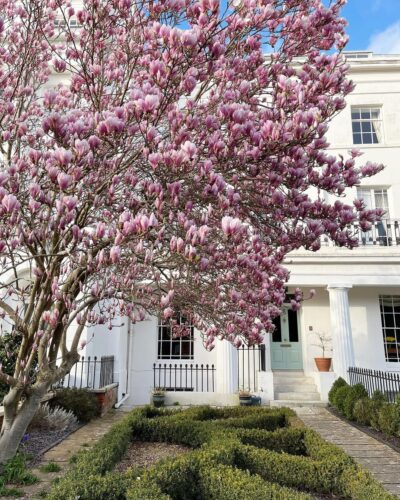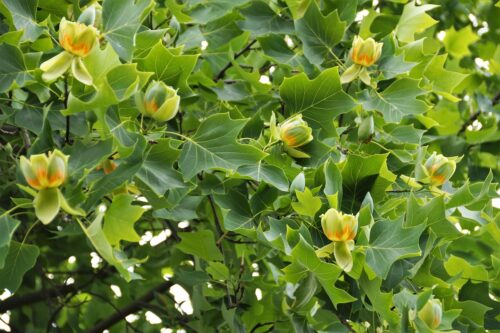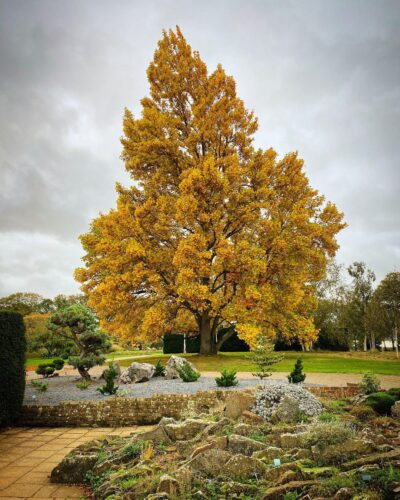Read Magnolia vs. Tulip Tree: Differences and Similarities in this detailed guide and compare these beautiful trees.
Magnolias and Tulip Trees, both striking in their own right, share common ground and distinct characteristics. In this comparison, you delve into the unique Magnolia vs. Tulip Tree: Differences and Similarities that define these two elegant trees.
EXPLORE Sugar Kiss Melon vs. Cantaloupe
What is Magnolia?

Magnolia is a genus of flowering plants known for its diverse species of trees and shrubs, including evergreen and deciduous varieties. These plants are admired for their large, fragrant, and often showy flowers. Magnolias are commonly used in landscaping and gardening for their ornamental value. One of the most famous species is the Southern Magnolia (Magnolia grandiflora), prized for its iconic, leathery leaves and large white blossoms. These plants have cultural significance and are often associated with beauty, purity, and resilience.
CHECK out Muskmelon vs. Cantaloupe
What is a Tulip Tree?

A Tulip Tree, scientifically known as Liriodendron tulipifera, is a tall and stately deciduous tree native to eastern North America. It is renowned for its distinctive tulip-shaped, greenish-yellow flowers that bloom in spring, giving the tree its name. The tree also features unique lobed leaves and a straight trunk, making it a popular choice in landscaping and forestry. Tulip Trees can reach impressive heights and are valued for their timber and their role in providing habitat for various wildlife species.
Explore Boysenberry vs. Blackberry
Magnolia vs. Tulip Tree: Differences

Magnolia and Tulip Tree are both striking trees known for their ornamental and aesthetic qualities, but they have distinct differences:
Taxonomy
Magnolia: Magnolias belong to the genus Magnolia and encompass various species, both evergreen and deciduous, with a wide range of flower colors and sizes.
Tulip Tree: Tulip Trees are a part of the Liriodendron genus and consist of a single species, Liriodendron tulipifera.
Flowers
Magnolia: Magnolia trees produce large, fragrant, and showy flowers, typically with white, pink, or purple petals, depending on the species.
Tulip Tree: Tulip Trees have distinct tulip-shaped, greenish-yellow flowers, which are quite unique in appearance and are typically not as fragrant as magnolias.
Leaves
Magnolia: Magnolia leaves are typically simple and can be evergreen or deciduous, depending on the species.
Tulip Tree: Tulip Trees have distinct, lobed leaves with four large, pointed lobes, giving them a tulip-like shape.
Size
Magnolia: While magnolias vary in size, they are generally smaller to medium-sized trees, though some species can grow quite large.
Tulip Tree: Tulip Trees are known for their impressive height, often reaching 80 to 100 feet or more, making them among the tallest hardwood trees in North America.
DISCOVER Zucchini vs. Cucumber
Geographic Range
Magnolia: Magnolias have a global distribution, with species found in Asia, the Americas, and other regions.
Tulip Tree: Tulip Trees are native to eastern North America.
Use
Magnolia: Magnolias are primarily grown for their ornamental value in gardens and landscaping due to their beautiful flowers.
Tulip Tree: Tulip Trees are also valued for their ornamental appeal but are additionally sought after for their high-quality timber.
Cultural Significance
Magnolia:
- Asia: In Asian cultures, particularly China, magnolias have symbolic significance, representing beauty, femininity, and purity.
- Southern United States: The Southern Magnolia (Magnolia grandiflora) is an iconic symbol of the American South, often associated with hospitality and the Southern way of life.
- Literature and Art: Magnolias have appeared in literature and art, symbolizing various themes, such as resilience and the fleeting nature of beauty.
Tulip Tree:
- Native American Culture: Tulip Trees are important for Native American tribes, where they were used for various purposes, including crafting canoes and ceremonial objects.
- Early American History: European settlers in North America appreciated the Tulip Tree for its straight trunk and ease of working with its wood, using it for construction and carpentry.
- Modern Landscaping: Tulip Trees are valued for their striking appearance and are often planted as ornamental trees in parks, gardens, and urban landscapes.
EXPLORE Fennel vs. Celery
Bark Characteristics
Magnolia Bark: Magnolia tree bark tends to be smooth and grayish-brown, with a relatively even texture. It lacks deep furrows or ridges, giving the trunk a sleek appearance.
Tulip Tree Bark: Tulip Tree bark, on the other hand, is often darker and can be furrowed or deeply ridged, creating a more textured and rugged appearance.
Fruit and Seed Characteristics
Magnolia Fruits and Seeds: Magnolias produce cone-like fruiting structures, often referred to as “cones.” Inside these cones, you can find bright red seeds. Birds and small mammals typically enjoy these seeds.
Tulip Tree Fruits and Seeds: Tulip Trees produce cone-shaped clusters of seeds that are attached to a papery wing. These seeds are also a food source for various wildlife species, particularly birds.
Growth Rate
Magnolia Growth Rate: The growth rate of magnolia trees varies among species, but generally, magnolias tend to have a moderate to slow growth rate. They may take several years to reach their full size, making them suitable for smaller landscapes.
Tulip Tree Growth Rate: Tulip Trees are known for their relatively fast growth rate compared to many other tree species. They can grow several feet per year under optimal conditions and quickly reach impressive heights.
Read Ghost Pepper vs. Carolina Reaper
Magnolia vs. Tulip Tree: Similarities

Magnolia and Tulip Tree, despite their differences, share several similarities:
Ornamental Value:
Magnolia: Known for their large, showy flowers, magnolias are widely planted for their ornamental beauty in gardens and landscapes.
Tulip Tree: Tulip Trees are also valued for their striking appearance, with unique tulip-shaped flowers and distinct leaves, making them popular choices for landscaping.
Deciduous Nature:
Magnolia: Many magnolia species are deciduous, meaning they shed their leaves in the fall, providing seasonal interest with changing foliage.
Tulip Tree: Tulip Trees are deciduous as well, shedding their distinctively shaped leaves in the autumn, contributing to the fall landscape.
Wildlife Attraction:
Magnolia: Magnolia trees often attract pollinators like bees and butterflies due to their fragrant flowers.
Tulip Tree: Tulip Trees provide habitat and food for various wildlife species, including birds and squirrels, which feed on their seeds.
Wood Quality:
Magnolia: While not as commonly harvested for timber, some magnolia species produce fine-grained wood suitable for woodworking and cabinetry.
Tulip Tree: Tulip Trees are valued for their high-quality timber, used in construction, furniture-making, and musical instrument production.
North American Origin:
Magnolia: Some magnolia species are native to North America, particularly in the southeastern United States.
Tulip Tree: Tulip Trees are also native to eastern North America, sharing a common geographic origin.
Longevity:
Both magnolias and tulip trees are known for their long lifespans, with some individuals living for several centuries under favorable conditions.
Explore Celery Root vs. Jicama
Additional Similarities:

Seasonal Changes:
Both Magnolia and Tulip Trees exhibit distinct seasonal changes:
Bloom: Magnolias typically bloom in spring or early summer, while Tulip Trees also produce their distinctive tulip-shaped flowers during the spring months.
Leaf Drop: Both trees are deciduous, meaning they shed their leaves in the fall, contributing to the vibrant colors of autumn landscapes.
Landscaping Uses:
Magnolia and Tulip Trees share popularity in landscaping due to their aesthetic appeal:
- Magnolias are often used as focal points or specimen trees in gardens and parks, attracting attention with their showy flowers.
- Tulip Trees are valued for their tall, straight trunks and striking foliage, making them excellent shade trees and ornamental additions to landscapes.
Adaptability:
Both Magnolia and Tulip Trees demonstrate adaptability in various environments:
- They can thrive in a range of soil types, provided the soil is well-drained.
- These trees are generally hardy and can tolerate a variety of climatic conditions, although they may perform best in specific regions.


